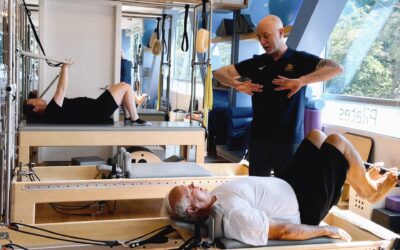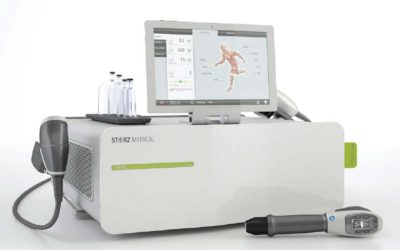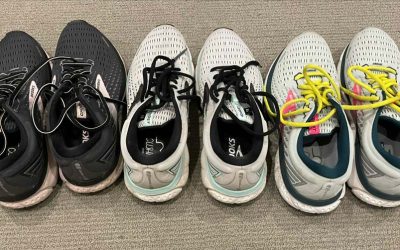Real-Time Ultrasound
Physiotherapists can use diagnostic ultrasound to get real-time information about how specific muscles are contracting in your body. This is called Real-Time Ultrasound (RTUS) imaging or Rehabilitative Ultrasound Imaging (RUSI). Diagnostic ultrasound provides a non-invasive way for your therapist to assess how different muscle layers are functioning and thus can provide a tool to help train more optimal recruitment patterns.
At Synergy Physiotherapy + Pilates our therapists are trained to use Real Time Ultrasound (RTUS) imaging to assess and train your abdominal wall, the deep muscles of the low back, and the pelvic floor. We also use RTUS to assess the separation of the rectus abdominis muscle and the linea alba in women and men who have a Diastasis Rectus Abdominis (DRA).
If you have low back or pelvic girdle pain, urinary stress incontinence or you’ve been pregnant and had children, there may be changes in how you recruit both the deep and superficial muscles of your “core”. Some of the muscles may be over-active, while others may be in under-active. Or you may have an imbalance of the left vs. right sides.
Studies have shown that your nervous system coordinates the deep and superficial muscles in your abdomen and low back such that the deeper muscles will contract milliseconds before you move your limbs. In some people with low back or pelvic girdle pain, the body seems to lose the ability to perform this pre-contraction effectively. We also know that even when your pain goes away, you can still have poor function of the deep stability muscles which can then predispose you to having another epidsode, or recurrence, of your low back or pelvic girdle pain. Therefore it’s important to know if these muscles are working properly.
As these deep muscles are designed to stabilize your bones and are not meant to contract maximally, it can be difficult for some people to feel them and get them working again. The RTUS images these muscles so you can see whether or not the exercises and cues you are using to “contract your core” or perform your “Kegels” are actually doing what you want them to do – that is, achieving the goals of re-training specific muscles. Many patients find that being able to see their muscles work ‘live’ and ‘on-screen’ makes a big difference to ‘finding their core’ and moving to the next stage of their rehabilitation process.
Your Synergy Physiotherapist will decide whether or not they need to image your muscles with the ultrasound. It’s important to note that not everyone has a problem with their deep muscles, and in fact, some people are actually over-activating all of their muscles. For these patients, we will help you figure out how to release and “let go” of your over-active muscles.
Often, most patients need to learn a combination of “letting go” of some over-active muscles, and then connecting to and training new muscle patterns across a variety of movements. Our exercise prescription is individual and specific to what is happening in your body, designed to help you Move Better, Feel Better and Be Better.
How Does It Work? A water based gel is applied to the area where the ultrasound will be used (for example, your abdomen if we are imaging your abdominal muscles). When we apply the ultrasound, a sound wave travels from the sound head, through the gel and into your tissues. These waves reflect off the tissues they encounter. Because different tissues have different densities, the sound wave will reflect back at various rates so we can tell the difference between each type of tissue. The reflections are displayed as images on a screen allowing us to observe the movements of the muscles as they occur and determine if they are functioning correctly. If they are not, we can use it in conjunction with our integrated total body assessment to figure out why the muscles are not working the way they should. Then we use the ultrasound to give you feedback and help you make your contraction look like an optimal contraction. The image of an ‘optimal’ contraction can also help you see and feel when you are doing a good contraction. This can speed up your ability to get your core functioning well.
Our Blog
Insights and Tips from Our Experts
Next Group Physio Healthy Bones™ Class starts Wed. Sept 13th – Sign up now!
Are you interested in improving your balance, stability, muscle strength and bone health? Then this class is for...
Shockwave Therapy – What is it & How can it help?
Shockwave therapy has become increasingly common as a treatment option for musculoskeletal conditions to assist...
Running and Pregnancy
Running has become a very popular sport, and more than half of recreational runners are women. For runners who...



